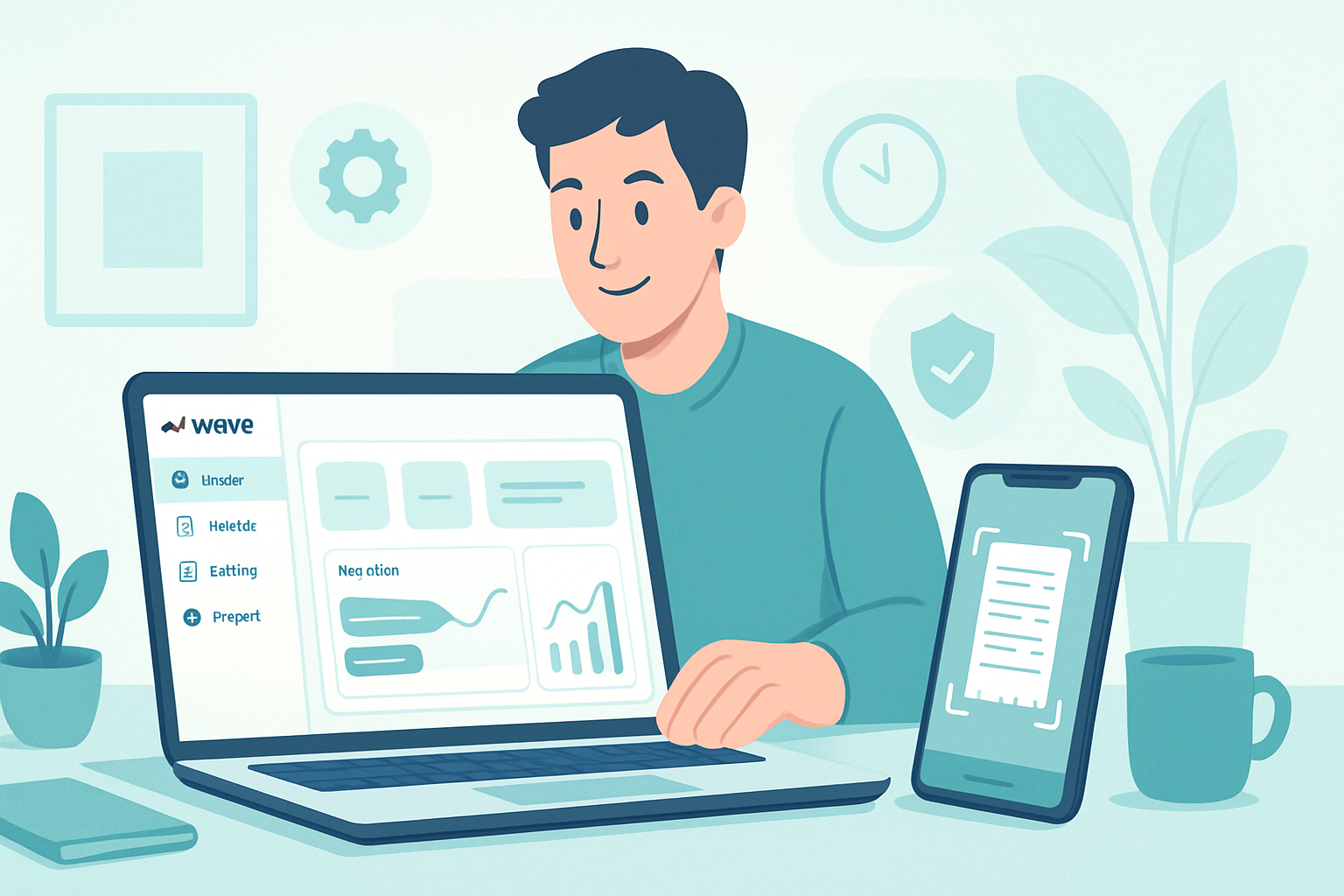· business · 7 min read
The Key to Boosting Sales: Unconventional Shopify Apps You Didn't Know You Needed
Discover lesser-known Shopify apps that can move the needle on conversion, average order value, and retention. From post-purchase funnels to behavioral analytics, learn which hidden gems to install, how to test them, and the exact KPIs to track.

Achieve bigger orders, smarter insights, and higher repeat purchases - without rewriting your store
You want more sales. Not someday. Now. This post gives you a curated list of unconventional Shopify apps that most stores overlook - and explains exactly how to use them to grow revenue, average order value (AOV), and customer lifetime value (LTV).
Short version: install the right small apps, run focused tests, measure the right KPIs, and compound small wins into big results.
Why “unconventional” apps? Because everyone knows about email automation and discount popups. The stores that scale are the ones that add the right niche tools to solve specific leaky buckets - post-purchase funnels, behavioral analytics, intelligent bundles, web push, and smarter returns - and then test them.
How to read this guide
- Outcome-first - each app is paired with what it directly impacts (AOV, conversion rate, retention, or insights).
- Actionable setup tip - one thing to configure that makes a measurable difference.
- Measurement - the KPI(s) to track after installing.
If you want to increase AOV by 5–20% in the next 60 days, start with the sections labeled “Increase AOV.” If you want better user insight that improves conversion, skip to “Understand customer behavior.”
Increase AOV (average order value)
- ReConvert - Post-purchase funnels that actually convert
Why it helps: Post-purchase pages convert higher because customers have already bought and trust you. ReConvert lets you present targeted upsells, cross-sells, and order bump offers on the Thank You page.
Quick setup tip: Create a single post-purchase funnel for purchases over your store’s median order value and add a low-friction order bump (single-click, discounted accessory). Use persuasive copy and a single image.
KPI to watch: Incremental revenue per order (post-purchase revenue / total orders) and change in return rate.
Reference: ReConvert (app overview) - https://reconvert.io/
- Frequently Bought Together - Amazon-style algorithmic bundles
Why it helps: Bundle recommendations that mirror what other buyers purchased increase AOV without heavy discounting.
Quick setup tip: Start with a single product page (a high-traffic or best-selling SKU). Display a 2–3 item bundle with a clear combined savings and fast add-to-cart button.
KPI to watch: Bundle attach rate (bundled add-to-cart / page views), AOV lift for bundled pages.
Reference: Frequently Bought Together (Shopify App Store) - https://apps.shopify.com/frequently-bought-together
- Vitals - a conversion toolbox in one app
Why it helps: Instead of installing five separate conversion apps (countdowns, reviews, trust badges), Vitals bundles many high-impact features so you get multiple small lifts with one install.
Quick setup tip: Activate one conversion tool at a time (for example, social proof + urgency) and measure incremental change before enabling the next.
KPI to watch: Conversion rate lift on pages where Vitals features are applied.
Reference: Vitals (app home) - https://vitals.co/
Boost conversions and reduce friction
- PushOwl - Web push for cart recovery and flash offers
Why it helps: Web push notifications reach customers outside email - the second-highest conversion channel for many stores. Timely cart reminders and flash-sale pings drive immediate sessions and purchases.
Quick setup tip: Create a 24-hour abandoned-cart push sequence capped at two messages. Use clear incentives (free shipping threshold, limited-time discount).
KPI to watch: Push-driven conversion rate and revenue per subscriber.
Reference: PushOwl - https://pushowl.com/
- Lucky Orange - Heatmaps, session recordings, and conversion funnels
Why it helps: Most conversion problems are behavior problems. Heatmaps and session recordings show where visitors hesitate, scroll, or drop off - allowing surgical fixes rather than guesswork.
Quick setup tip: Start by tracking your top three product pages and a checkout page. Watch 20 recordings that resulted in drop-off, then fix the most repeated friction point.
KPI to watch: Drop-off rate on tracked pages and conversion rate after implementing fixes.
Reference: Lucky Orange - https://www.luckyorange.com/
- Littledata - Plug the analytics gaps
Why it helps: If your analytics are wrong, your decisions will be too. Littledata automatically fixes common Shopify <> Google Analytics inaccuracies (including source attribution and subscription tracking), giving cleaner revenue attribution.
Quick setup tip: Enable the Shopify connection and validate that source/medium attribution for paid channels maps correctly before you run acquisition tests.
KPI to watch: Accuracy of acquisition attribution and revenue per channel.
Reference: Littledata - https://www.littledata.io/
Recover revenue and keep customers coming back
- Loop - Returns and exchanges that retain customers
Why it helps: A smooth returns experience turns potential churn into future orders. Loop automates returns and helps route customers into exchanges or store credit instead of losing them.
Quick setup tip: Offer an instant-exchange path with a small incentive (e.g., free expedited exchange shipping) to retain the original sale value.
KPI to watch: Repeat purchase rate for customers who used returns and net revenue retention.
Reference: Loop Returns - https://www.loopreturns.com/
- Gorgias - Shopify-first customer service that sells
Why it helps: A fast, commerce-aware helpdesk converts support conversations into sales using pre-made scripts and order context inside the support ticket.
Quick setup tip: Build three templated responses for common objections (shipping delay, size exchange, missing item) that include a one-click discount code or product suggestion.
KPI to watch: Conversion rate from support interactions and average resolution time.
Reference: Gorgias - https://www.gorgias.com/
Advanced personalization & loyalty
- Seguno - Email marketing built for Shopify simplicity
Why it helps: Native Shopify email apps like Seguno reduce friction in syncing product data and allow you to build post-purchase and retention flows without heavy setup.
Quick setup tip: Create a “first purchase + 30 days” automation that recommends related products based on the original order.
KPI to watch: Repeat purchase rate and email-driven revenue.
Reference: Seguno - https://www.seguno.com/
- Growave - Reviews, loyalty, and UGC in one
Why it helps: Micro-incentives for reviews and UGC, combined with a loyalty program, increase social proof and repeat purchases.
Quick setup tip: Launch a small loyalty program focused on one action (reviews) and reward customers with points redeemable on a future purchase.
KPI to watch: Review submission rate, UGC conversion rate, loyalty program retention.
Reference: Growave - https://www.growave.io/
Choosing the right app(s): a pragmatic 90-day plan
Week 0: Baseline and hypothesis
- Collect baseline metrics - conversion rate, AOV, cart abandonment rate, revenue per channel, repeat purchase rate.
- Pick one specific outcome (e.g., increase AOV by 7% in 60 days).
Week 1–4: Install one app and measure
- Install an app aligned to your outcome (e.g., post-purchase funnel for AOV).
- Run a defined experiment - split traffic or use pre/post windows.
- Use Littledata or another analytics fix to ensure your attribution is correct.
Week 5–8: Iterate and add a complementary app
- If the first app shows positive lift, keep it and iterate on messaging and offers.
- Add a second app that addresses a different leakage point (e.g., PushOwl for timely promotions).
Week 9–12: Scale winners and remove losers
- Keep what moves KPIs. Turn off what doesn’t.
- Document learnings - what copy, trigger, or discount performed best.
How to test apps without blowing your margins
- Use control groups or split URLs where possible.
- Start with low-friction incentives (accessories at small discounts or default free-shipping thresholds) before heavy discounting.
- Track incremental revenue and not just absolute revenue to avoid false positives.
Metrics to track across all tests:
- AOV (average order value)
- Conversion rate (by page and funnel step)
- Attach rate (for bundles/upsells)
- Repeat purchase rate and LTV
- Cost of app (monthly + revenue share) vs incremental revenue - simple ROI
Final notes: small apps, big compounding effects
Big features aren’t always the answer. Small, surgical apps that address a single pain point tend to give the clearest, fastest wins when you test responsibly. Install one, measure, iterate, then add the next. Compounded, these little wins become the real key to sustained sales growth.
References
- Shopify - Apps & integrations: https://apps.shopify.com/
- ReConvert - https://reconvert.io/
- Frequently Bought Together (Shopify App Store) - https://apps.shopify.com/frequently-bought-together
- Vitals - https://vitals.co/
- PushOwl - https://pushowl.com/
- Lucky Orange - https://www.luckyorange.com/
- Littledata - https://www.littledata.io/
- Loop Returns - https://www.loopreturns.com/
- Gorgias - https://www.gorgias.com/
- Seguno - https://www.seguno.com/
- Growave - https://www.growave.io/



